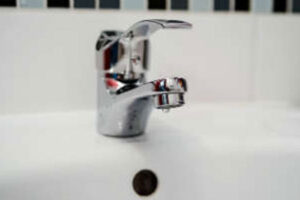With the cold winter spell upon us, the freezing temperatures can cause your pipes to crack or burst, which can result in significant damage to your plumbing system and your entire home. Fortunately, there are some measures you can take while the weather is still nice to prevent frozen pipes when winter strikes.
Pipe-Wrap Insulation
Pipes that are exposed to open air like basement or attics and do not have proper insulation, tend to freeze more easily. Having them insulated in time could significantly reduce such occurrences. These insulations are typically made of different materials such foil-backed fiberglass, foil-backed natural cotton, fiberglass and plastic among others. It is easy to install the insulation material; all you need to do is slip it around the pipe and tape it in place.
Up The Thermostat
During the cold months, ensure that the thermostat is kept on day and night to keep your pipes healthy. Although this may put much of a dent in your energy bill, it’s a better choice than to deal with the aftermath of a frozen pipe, which may burst and cause water damage. Set the thermostat to at least 55 degrees F (13 degrees Celsius) to keep the temperature constant, well above the freezing point of water. This will also improve warm-air circulation behind the walls and attic where pipes are located.
Turn On The Faucet
Running water through the pipe–even a slow drip–helps prevent pipes from freezing. The little water movement in the pipe disables any water from freezing quite rapidly. However, if you notice the drip has ceased, you may need to increase the flow slightly. The principle behind this is that water in motion has kinetic energy that helps temperature remain above sea level.

Open Cabinet Doors
The exposed pipes running to a kitchen and bathroom sinks are particularly vulnerable to freezing. When the temperatures drop, it is a recommended to keep cabinet and interior doors open so that the heat from the rest of the house keeps the pipes warm. Alternatively, you can place a space heater directed at that area, as an extra measure of cold protection.
What Happens If Pipes Freeze?
Sometimes our best preventive measures aren’t successful. When this happens, here’s what you should do;
- If you turn on your faucets and nothing comes out, turn off the main water valve immediately. This is necessary just in case there’s a small crack you’re unaware of because the water is frozen.
- Try to locate the frozen area, which is normally colder than the rest of the pipe. Note: there may be more than one spot if you’ve multiple blockages.
- Open the cold water tap that is closest to the frozen area of the pipe. This will let the water escape safely down the drain when it defrosts.
- Warm the pipe using a hairdryer. Start by warming the sections of the pipe closest to the faucet, and work towards the coldest parts. Once temperatures rise, frozen pipes thaw and water will flow again. In some cases, however, the expansion of the ice causes the pipe to crack or burst. In such cases, you should never operate an electrical device to avoid electrocution.
- After a freeze, inspect the pipe for cracks. You’ll want to know you won’t cause a flood when you turn your main water valve back on.
- Call in a reputable professional plumber to assess the situation and make recommendations.
Bottom Line
With winters getting colder and colder over the years, there are many things that we can do to ease the worry about pipes bursting, and the above insights are simple and can be easily done without hassle.
